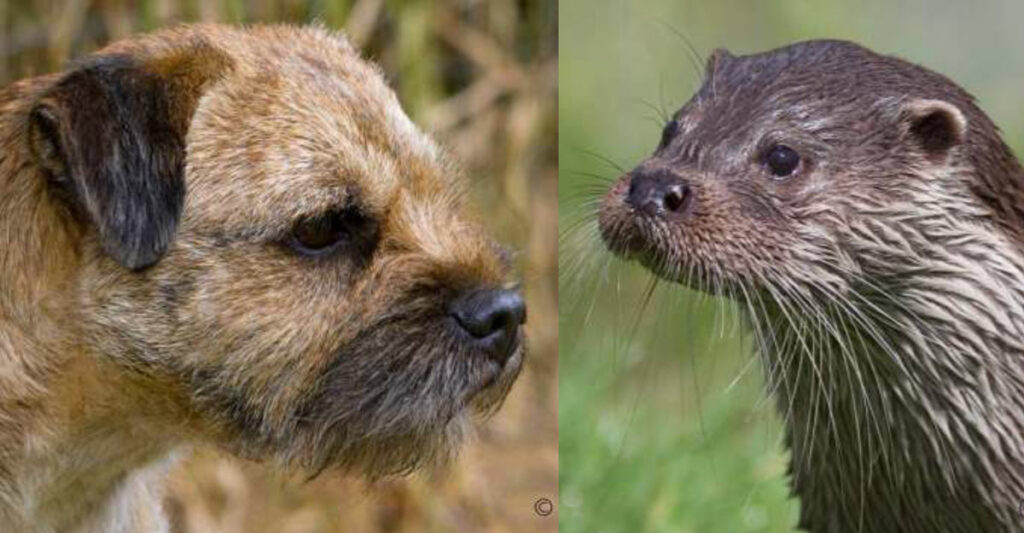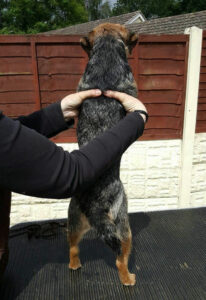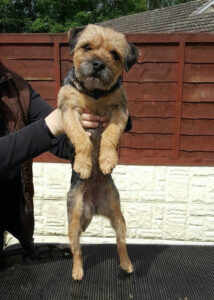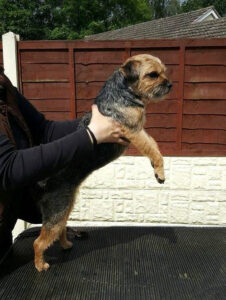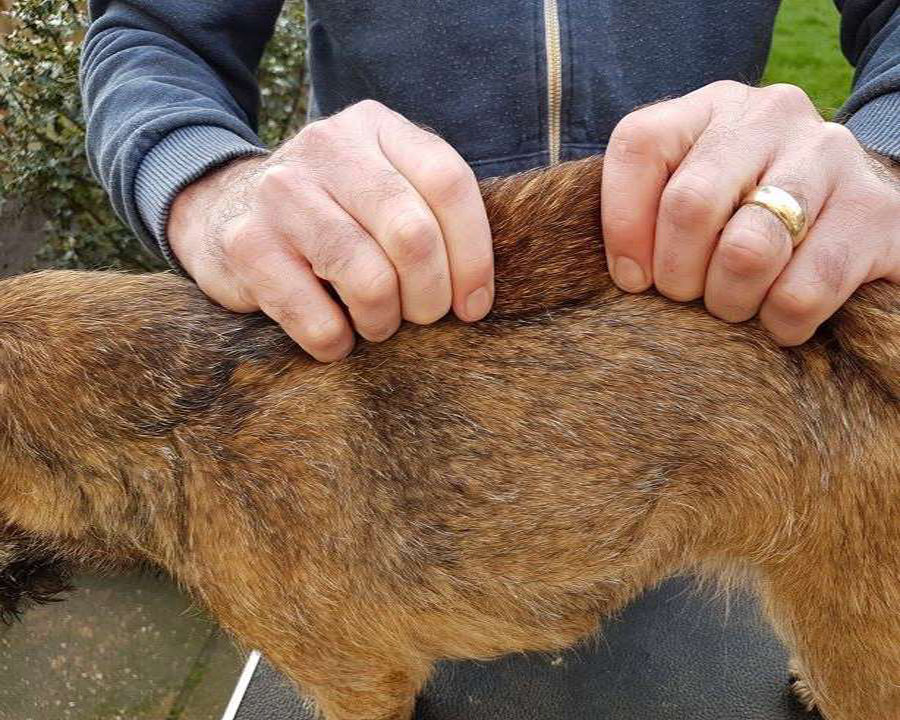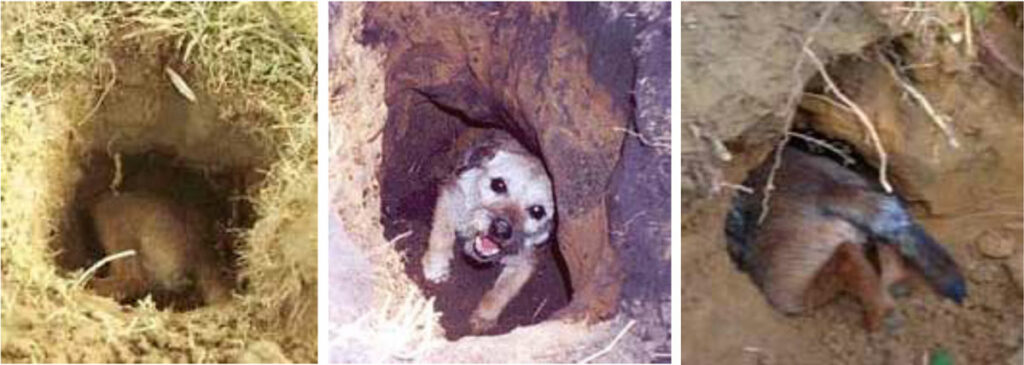Border Parts
Part 1: We really Otter know this.
I am going to do a series of short articles on some of the Essentials of the Border Terrier breed standard, which I feel are often misinterpreted or even taught incorrectly.
I will write these articles from the perspective of the Canadian Standard, as that is what we breed, show and judge by here. However, I would ask all Border Terrier breeders to read the standard of the country of origin as this is where the dog came from and is rooted to and is what the early terrier men who bred these dogs were looking for. It is the standard from which all others have derived.
We all have heard the term “Otter Head”, indeed it is a commonly used term as it is in both the UK standard and our Canadian standard – The UK Standard states “Head like that of an otter” The Canadian standard states – “Similar to that of an otter”. What neither of them states is what type of otter are we comparing this head to?
Those of us who cut our teeth in borders in the UK have no problem with this, there is only one otter living wild in the UK. Lutra Lutra the European River Otter. This otter was once one of the border terrier’s legal quarry but has been a protected and much loved British species for many years now.
When the original standards were drawn up all those years ago by hard bitten terrier men, most of them would be actively working their dogs; otters as said above, would have been hunted by many. They would see them often and their terriers would also be seen swimming in the burns and streams where they were working. Having seen borders swimming and also having seen otters swimming, I can easily see their point. There is similarity. I and others, who over the years have discussed this, believe that it is when seen in water that the similarity is strongest. A border swimming with just his head above water should be very easily compared to an otter doing the same. We do not want a border to be exactly the same as an otter obviously but that similarity is asked for and should be seen.
Border terriers are asked to have a short and well filled muzzle (short and strong) the otter has a fairly short and very strong muzzle, the otter has short muzzle whiskers, borders should have short facial furnishing. (A long flowing beard is anathema on a border) One of the major similarities though, is in the “stop” an otter has a moderate curve up to his skull with good width between the eyes, both of which we are asked for in our breed standard. We are asked for a moderately broad and flat skull, the otter has this as well. We are asked for slightly full cheeks, otters have these. A nose of good size – otters need to be able to suck in large lungfuls of air and borders when running for long periods or working against their quarry also need large open nostrils to facilitate this. Big teeth are a must in a border and the otter must have strong teeth with large canines to catch and kill their own quarry, often large fish.
A border with a stop that you can set your thumb into is incorrect in that part of its head. A border with round large eyes that bulge outwards is incorrect in this part. A border with a narrow and long muzzle is incorrect in this part. All of these faults speak to the dog not being able to fulfil his function as a working dog. A dog that is asked to go to ground and bolt or if he cannot bolt then stay with his quarry until help in the form of a human digs to him and dispatches his quarry or if that cannot happen the border must have the strength to kill his quarry.
Nowadays most borders are not asked to work to ground. This is in no way a licence for breeders to allow these faults to creep in. We should still be breeding for the best heads we can and incorporating all of the virtues that are outlined in our standard and also in the head of the European River Otter. As breeders it is our duty to stay faithful to our standard, it is the blueprint for what a border terrier should look like and should be. A lot of folk in countries other than the UK and even in the UK nowadays do not realize which species of otter to compare the borders head to. With social media being so prevalent it is easy to get pictures of many gorgeous otters. These include the Sea Otter and the Asian short clawed Otter. Both of these animals are lovely in their own right, but heaven forefend we should have border terriers with heads which look like these!
The sea otter has a big chunky cutesy head more reminiscent of a teddy bear. The Asian short clawed otter has round eyes and a muzzle that is shorter than we want in a border terrier. The European river otter is a more artful and moderate chap, he has keen eyes and a general look that is workmanlike, although full of fun. This is the only otter we should compare our dog’s heads to. As an aside I feel our borders also have some of the characteristics of the otter, playful happy little dogs but utterly hard bitten when it comes to getting their job done.
Below are some shots (Courtesy of Dawn Bladen, Emblehope photography and Border Terriers) of Lutra Lutra
the European River Otter and for comparison a Sea Otter and an Asian Short Clawed Otter.
Article: ® Jane Parker Conundrum Border Terriers 2016.

Compared to:
Sea Otter – INCORRECT! Asian Short Clawed Otter – INCORRECT!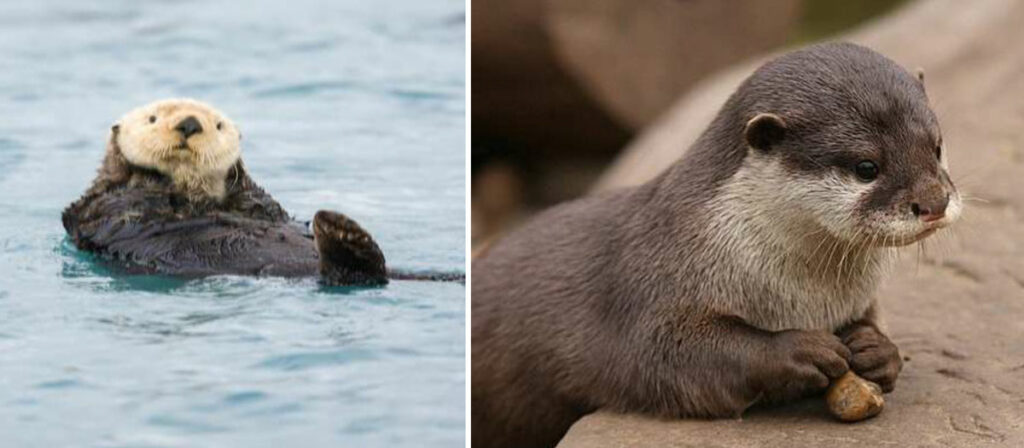
Part 2: Does it span?
We are an odd lot in this breed. The standard of the country of origin barely covers a page with the hindquarter of the dog described (perfectly!) with only one word. Here in Canada the powers that be gave us more words, but did not change anything else (thankfully) so we still have this small tenacious workmanlike chap who lives with us and for those of us that do so, works with us.
None of the breed standards worldwide give us a height for the breed. This is with good reason. When the border originated it was as a working terrier, and “work” for this breed means to go to ground and bay (give voice) or bolt (make his prey move out of the earth or den) He was also expected to get to his place of work on his own four feet (in some instances he would be on horseback in saddlebags but mostly he got to work honestly) and some of the terrain was moorland, tussocky, stony, high. Or lowland, level, ploughed, etc. So borders with longer legs would be needed for some terrain and a bit shorter for other.
What has never changed is what is needed to go to ground! A narrow flexible (compressible) rib. The men that originated this breed knew well what they were doing and they had a canny way of making sure the dog was of the correct size to do the job whether he was taller or not. They spanned him. They placed their hands with thumbs together behind the dogs shoulders and their hands came around and under the dog behind the elbow. If they could do this easily and their fingers touched or hopefully overlapped a bit then they knew the dog could creep and wriggle into the earths of its then quarry. (The legal quarry of the Border Terrier at that time was Fox, Badger and Otter) – nowadays of those three in the country of origin it is just the fox that is legal quarry)
As breeders we do not want to breed dogs that are too big, so we have learned to span our dogs as the tool of choice to let us know whether or not our breeding showing stock is correctly built through the rib to go to ground. This spanning is vitally important. Not only does it give us information as breeders and judges. Far more important is the ability it gives to the dog itself to do its job without getting stuck or overwhelmed by its quarry. confront his quarry whilst laying flat out sometimes on his sides and bay at him to scare him out, or get to work on him physically with teeth and claw. Try to imagine this, all in a tight fox’s earth may only be four or five inches in places, it may even have clay pipes integral to the tunnel system. The dog has to slide and wriggle through these (pitch black) places and space that is dark, the only way out is usually the way you got in and to do this your chest MUST be narrow and able to compress. Your skin MUST be thick and loose so you can wriggle backwards as well as forwards. You must be courageous!
For those of you who do not work their dogs, or who enjoy the sport of “Earthdog”, please do not equate the 9” and square tunnels leading to a caged rat, as work. What it does do is test the willingness of the dog to creep into a darker place and close up to quarry in a safe environment. I like Earthdog and I think it is great that we have it, and I would defend to the last breath the good folk who put these trials on. However for those who may have thought these were similar to a real earth and that a dog who can get down there is narrow, sadly this is not so!
When giving judges education, we always try to educate them as to why they are spanning as well as showing them how. If a judge is prepared to stand in the show ring of any breed, s/he should have at least the knowledge of why that breed is on the planet. So when you have that next show prospect in the whelping box, and you are evaluating his good and bad points, remember what he was bred for and WHY those points are important and when you get to his rib, make sure it is long, compressible and not round. The pictures below are Coutesy of Dawn Bladon (Emblehope) and show a border being spanned correctly.
Jane Parker © 2016
HEAD TO TAIL
PART 3: Racy… but not in a fast way!!
Carrying on with my short articles on the various parts of the Border highlighted in our breed standards, I always smile when I come to the part in the UK breed standard for hindquarters. It says” Racy”, that is it, (although it does go on with another sentence to tell us that feet should be small with thick pads.) But “Racy”?
Now, I have been in this breed for a lot of years, and I know exactly what comes to my mind when I see the term, and, to my mind, the word defines what I want in a Border’s hindquarter perfectly. However, let us go to the standard for us here in Canada. “Muscular and racy with thighs long and nicely moulded. Stifles well bent and hocks well let down. Feet small and compact. Toes should point forward and be moderately arched with thick pads.” Really it is asking for the same thing, but is wordier and gives more insight to those newer to the breed who maybe have not yet understood what the Border was bred to do. I always reiterate this in this series of articles as unless you fully understand what the border’s work is, you cannot entirely see how his form follows his function.
The Border was bred to “work” (bay at, bolt or kill) Otter, Badger and Fox (His only legal quarry in the UK now is the fox) in his native land, the borders of England and Scotland. He had to go to ground into the den or holt of his quarry and to do that he needed certain attributes that we are discussing in these articles.
Back to his Racy hindquarter and let us go through it from the loin down to his toes. His bone structure and musculature are what will give the individual the best build to do his job in the most efficient way. The dog’s pelvis joins the lower backbone and this in itself can give the top line of the dog various correct or incorrect levels. (i.e. a flatter pelvis will make the dog’s hind movement have a shorter stride and lift the foot higher and in a rounder motion which is obviously less efficient) The next bone is the femur and this articulates with the pelvis and should be roughly the same length as the Tibia and Fibula to give the correct “bend of stifle” at their meeting point. Then come the hock joint and the sets of bones (tarsals and metatarsals) that form the lower part of the hock and foot. To be a strong working joint the hock should be fairly short, a long hock cannot articulate fully and is weaker.
The large muscles covering the bones of the hind limb should be able to be seen easily, the first and second thigh muscles long and well defined. As well as being able to be seen these muscles should be easily felt. A strong muscle is firm and lean and what we want to feel. Sloppy muscle tone does not go with the term “Racy”!
His hocks as discussed should be short and strong and his feet are small, compact and again, strong. Weak feet are anathema in a working terrier, he uses all of his parts, but he cannot do his job well with poor feet, so long splayed toes are wrong, being down on his metacarpal pad (back pads) is wrong. We want the dogs standing forward on his toes which will be compact and strong.
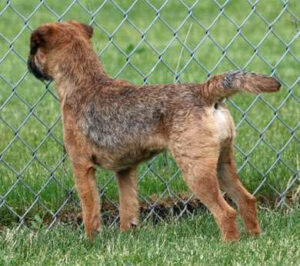
A good Border should stand foursquare and can remind us of the way in which a nice hunter type horse stands over a lot of ground. His hindquarter should look athletic, we should see his muscle tone and the bend of stifle should be moderately well defined. A Border who is too straight through his stifle will have a choppy hind movement that goes up and down rather than having good forward motion. The dog with an over angulated stifle (which often goes with a flatter pelvis) will compensate by having to rotate his forward movement higher and allow his foot to flick out further on the backward part of his stride, this can look very flashy but is nothing that we want to see in our moderate workmanlike terriers.
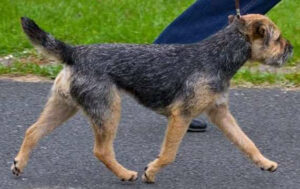
Jane Parker ©2016
So in retrospect when looking at or running our hands over a “Racy” Border we should see and be able to feel individual muscles, we should see a nice but moderate angulation at the stifle joint and the hock should be well let down leading to nice strong compact feet. These are the attributes of the hindquarter that will allow the dog to push himself into an earth and to grip the ground and force the rest of his body forward to face his quarry.
No matter whether or not our borders ever see true quarry, these are the components that will allow him free and natural movement with his hind foot pushing off from the ground and giving a good length of stride. The photos in this article pictures are not of my dogs. They are of dogs I admire and who have the quality that is termed, “Racy.”
FROM HEAD TO TAIL
Part 4: When you need a thick skin!!
In this article, I will discuss the skin and coat of the border terrier. Both are on my “Essentials” list. The Standard of the Country of origin states: Harsh and dense; with close undercoat. Skin must be thick. Our Canadian standard states: “The hide is very thick and loose fitting.” So by making a point of this both standards give us to understand that it is an important feature, but neither tells us why. The skin of any mammal is the largest organ of the body. It protects the body against weather; it grows hair to further protect. It gives the sense of touch. It excretes oils to protect itself and its body against bacteria. Having three layers, the skin is formed by the Epidermis, the Dermis and the Sub cutis. Each of these layers has specific functions but together they form the thick pliable “pelt” of our wonderful borders. The particulars of the skin could be a long article on its own, so I have chosen to cut it very short in order to discuss its function in relation to our borders.
When the border terrier was still in the main a working dog in the border country of England and Scotland, he was expected to work in any weather over varied terrain. He was to go to ground in deep narrow dark tunnels; he had to swim in icy burns and streams. He could not do this if he had a thin skin and a soft non waterproof coat. He often spent hours tethered on a spade handle while other terriers were to ground. He had to have the ability to keep warm at these times. When we as breeders assess our pups we should be looking at all of his breed points, everyone has a good reason to be there, decided upon mainly for the working ability each part conferred to the dog. Lifting the skin of the dog and feeling the thickness between your fingers and its pliability or looseness is a must.
A thick tough pelt quite apart from the protection from weather and environment it gives, also acts as a great protection from the teeth of its adversary. A fox, sinking its teeth into the neck of a border often does nothing more than scrape the outer skin, and many borders have been saved from death by their thick pelt. The pliability of the skin allows the dog to move through the narrow dirt tunnels by moving and sliding along the body of the dog. When assessing this I love to be able to pick up a handful or more of loose pelt and lift it up over the back of the dog.
The coat should be harsh and dense, have a thick and soft undercoat. If not stripped other than when blown then the coat will grow, come to a lovely tight and weather proof condition in anything from 8 – 12 weeks and after that will continue to grow, start to part and at this time is called “blown”. Once blown the coat has lost its weather proof condition, will not keep the dog dry or warm and would be detrimental to the working terrier.
So it behooves us to be vigilant about the coat of the dogs we keep as well as the other important breed points. Do not keep a puppy which has a soft coat, or one with no or little undercoat. Thinking that these points have no relevance to you as your dog is not worked is doing a disservice to your dog. He is what he is and the standard is what it is because of the men who in the early days of the breed kept to a type of dog that would work well and strongly. They would not use a dog that sat and shivered or one who was wet in minutes when it was raining, or snowing.
These two important points in the standard of our dogs are part of what make him the dog he is. By working with our standard and choosing pups that conform to it, we pay tribute not only to the terriers themselves but to the hard bitten men who spent their time and effort to breed a dog that would look good and do the work that was expected of them in the most efficient way.
Jane Parker. ©2017. The photo at the end of the article shows the correct way to assess a Border’s pelt.
Photo by: Helen Thomas

